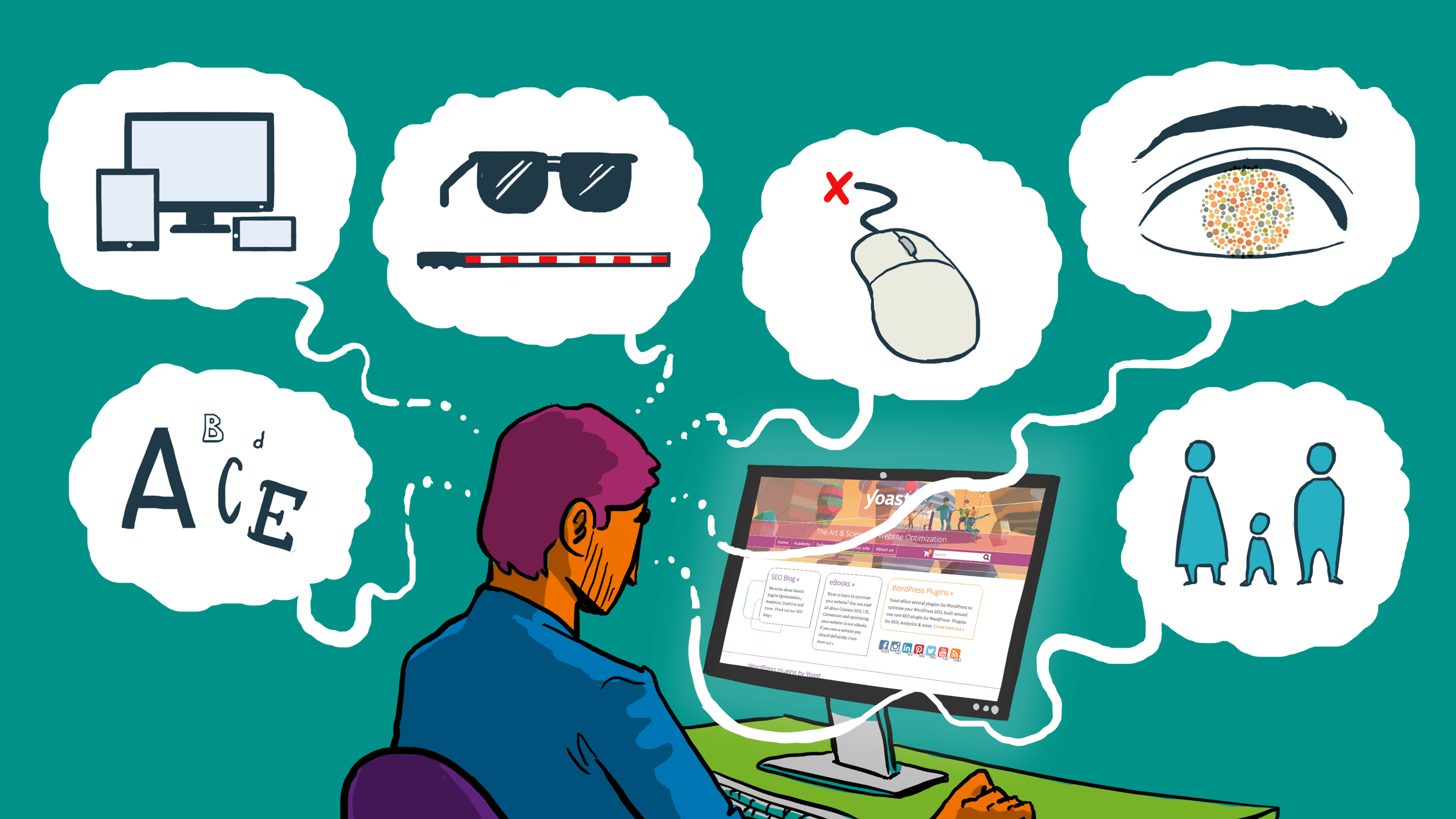
The review of my course prototype highlights several strengths, including its well-structured content, engaging synchronous activities, and clear course profile. However, among other shortcomings like absence of clear instructions and description of course flow, an essential area for improvement is the accessibility of the course for students with disabilities. Alas! this didn’t even cross my mind. While the course appears to be generally user-friendly, there are additional considerations that can enhance inclusivity and ensure that all students, regardless of their abilities, can fully participate in the learning experience which were totally left out. These are the things I would consider moving forward.
Navigation and Layout
For students with cognitive disabilities, dyslexia, or attention disorders, an alternative way to present the course materials, such as a structured table of contents or a visual roadmap, could be beneficial. Additionally, ensuring compatibility with screen readers and offering text-to-speech functionalities would support visually impaired students.
Multimodal Engagement and Accessibility Features
The use of interactive videos and discussion posts is commendable, but more accessibility features could be incorporated. For instance:
- Captions and Transcripts: While the videos are captioned, it is crucial to ensure that all multimedia content includes accurate captions and transcripts. Providing downloadable transcripts would also be helpful for students who prefer reading over watching videos.
- Audio Descriptions: If visual elements are used to convey important information in videos, audio descriptions should be added to make the content accessible to visually impaired students.
- Alternative Text for Images: If future modules incorporate images for more engagement, alternative text descriptions should be included for screen reader users.
Interactive Components and Assistive Technology Compatibility
The course encourages interaction through class comments and discussion posts, which is an excellent way to foster engagement. However, it is essential to ensure that these interactive features are compatible with assistive technologies. For example, students using screen readers should be able to navigate and engage in discussions without difficulty. Additionally, interactive videos should allow keyboard navigation to accommodate students who may not be able to use a mouse.
Assessment and Feedback Mechanisms
The immediate feedback provided in quizzes is a strong feature, but accessibility considerations should be incorporated into the assessment design:
- Alternative Quiz Formats: Offering multiple ways to complete assessments, such as verbal responses or text-based alternatives, could benefit students with motor disabilities or learning difficulties.
- Extended Time Options: Ensuring that students who require additional time due to disabilities can adjust quiz timers or request accommodations would make the course more inclusive.
- Clear and Concise Instructions: Instructions should be written in plain language and formatted for easy readability, with the option to listen to them using screen reader software.
Blended Learning and Inclusivity
The blended format of the course is well-suited to diverse learners, but it is crucial to ensure that students with disabilities can fully engage in both synchronous and asynchronous activities.
- Accessible Live Sessions: Synchronous sessions should include real-time captioning and sign language interpretation when needed.
- Flexible Participation Options: Providing alternative ways for students to participate, such as discussion boards or recorded lectures, ensures that those with hearing impairments, mobility issues, or time constraints can still engage effectively.
Conclusion
By integrating these accessibility enhancements, the course can become more inclusive and ensure that all students, regardless of their abilities, can fully engage with and benefit from the content. Implementing universal design principles in future modules will not only accommodate students with disabilities but also enhance the learning experience for all participants.

Hi Adaeze!! Your reflection on accessibility is impressive. Viewing your course through a more inclusive lens and identifying specific strategies is commendable. Also, the emphasis on screen reader compatibility, multimodal content, and flexible assessments shows a clear commitment to equity. Enhancing your content with plans to integrate universal design principles will undoubtedly change the learning experience for all students. Empowering it for diverse learners is a remarkable move.
Thank you so much for your kind and thoughtful feedback! Accessibility became such an important part of my design process, and I’m really glad it resonated with you. I truly believe that when we design with inclusivity in mind from the start, everyone benefits. This is something I wished I had considered at the beginning. I’m excited to keep building on universal design principles moving forward, thanks again for the encouragement and support!
I really appreciated reading your reflections in this post. Your discussion on the equity concerns surrounding technology access was especially powerful. I liked how you tied in the reality of rural and remote students lacking consistent internet or devices—it’s a piece of the puzzle that often gets overlooked in mainstream conversations about “21st-century learning.”
You also brought up an important point about teachers needing proper support and training to use tech meaningfully in the classroom. Without that foundation, even the best tools can fall flat. I wonder, do you think post-secondary institutions could be doing more to prepare future educators for this challenge?
Thanks for sharing your voice and experience—this gave me a lot to think about!
Thank you so much for your thoughtful response! I’m really glad the equity aspect resonated with you it’s such a crucial part of the conversation that we can’t afford to overlook. And yes, I absolutely think post-secondary institutions could (and should) be doing more to equip future educators with both the tech skills and the critical lens needed to navigate these challenges. It’s not just about knowing the tools it’s about understanding how, when, and *why* to use them to truly support all learners. I appreciate your insight and reflection it means a lot!